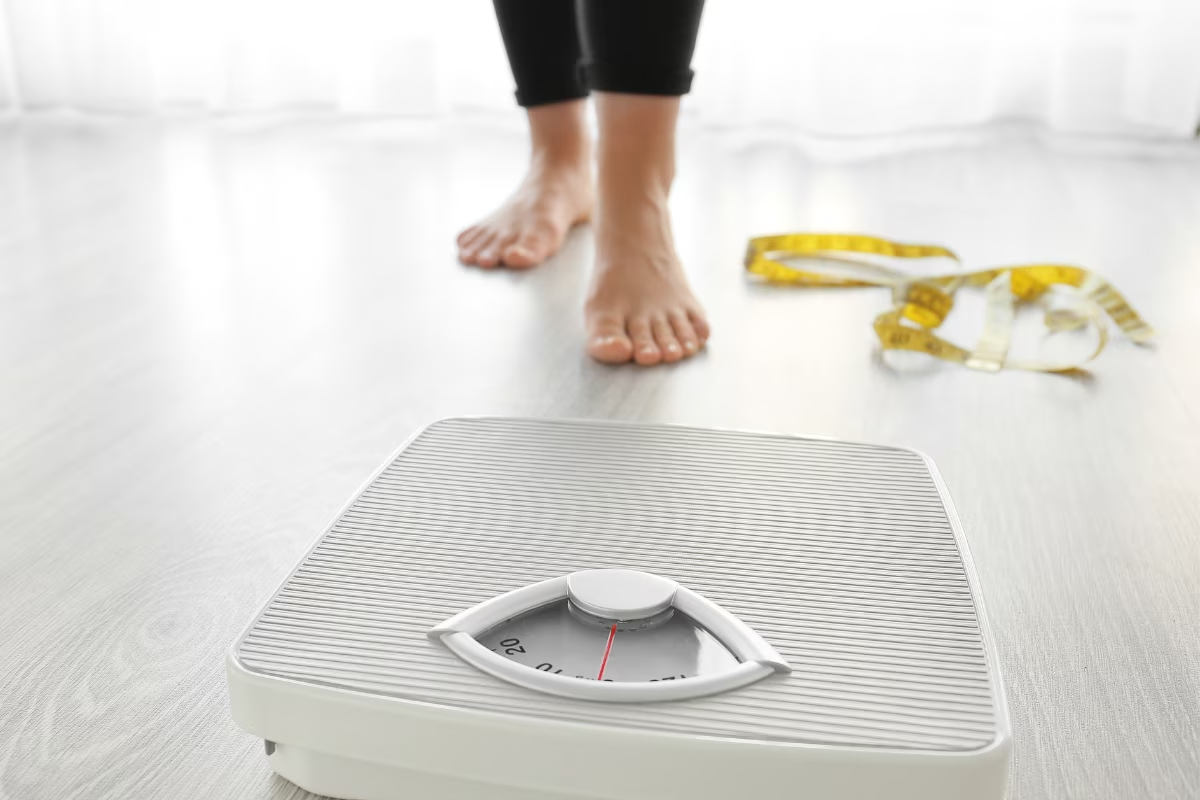You run and you run several times a week. You are sticking to your running plan. Maybe you’re even training for a race. But every time you step on the scale, the number either stays the same or worse, creeps up. Why is running for weight loss after 40 so hard?
“I’m running regularly, eating healthy… so why am I not losing weight?”
If this sounds like you, you’re not alone. It’s incredibly common, and while it can feel frustrating and discouraging, there are real, science-backed reasons this happens. The good news is, once you understand what’s going on, you can change your approach and finally see the results you want.
What’s Going On After 40?
1. Your Metabolism Is Slowing Down
As we age, we naturally lose muscle mass — unless we actively work to maintain it. Muscle burns more calories at rest than fat does, so less muscle = fewer calories burned daily. This is a big reason why your old strategies (like running a few extra miles) might not work like they used to.
2. Hormones Are Changing
Perimenopause and menopause bring changes in estrogen, progesterone, and even insulin sensitivity. Lower estrogen can lead to fat being stored around the midsection. Sleep gets disrupted too, which messes with hunger hormones and cravings. All of this adds up and makes weight loss harder.
3. Running Alone Isn’t Enough Anymore
Yes, running burns calories and helps maintain your weight. But many studies show that running alone won’t lead to major fat loss, especially if you’re not mixing things up. Your body adapts quickly. If you run the same pace and distance all the time, it becomes efficient and stops burning as many calories.
Give Your Body Time to Respond
Weight loss and body composition changes don’t happen overnight, especially as we get older. It can take weeks or even months for your body to reflect the positive effects of your workouts.
A meta-analysis of nearly 6,900 adults found that getting at least 150 minutes of moderate to vigorous aerobic activity per week is associated with reductions in body fat, waist circumference, and body weight. And the more consistently and longer you stick with it, the more meaningful the results become (Jayedi, A., Soltani, S., Emadi, A., & colleagues. (2024).
Similarly, long-term recreational running has been shown to improve body composition, including reduced fat mass and increased lean mass — especially when combined with strength training or dietary adjustments (Kutac, P., Bunc, V., Buzga, M., Krajcigr, M., & Sigmund, M. (2023).
If you’re feeling stuck, remember: the work you’re putting in is helping your health, and often, changes are happening under the surface before they become visible.
12 Surprising Reasons You’re Not Losing Weight From Running
- You’re Chronically Stressed
High stress levels (mental or physical) can increase cortisol, a hormone that encourages fat storage, especially around the belly. Running is a great stress reliever, but overtraining or life stress without proper recovery can stall weight loss. - You’re Eating More Than You Think
Running makes you hungry, and it’s easy to overeat healthy foods or indulge because you “earned it.” Even small extras (like peanut butter or post-run treats) can cancel out your calorie deficit. - You’re Gaining Muscle (and Losing Fat)
The scale might not budge, but your body could be changing. Running (especially strength-based workouts like hill sprints) can build muscle, which weighs more than fat but takes up less space. Your clothes may fit better even if your weight stays the same. - Hidden Calories Sneak In
Sports drinks, gels, fancy lattes after your run, they all add up. Marathon training requires fuel, yes, but those extra calories can make fat loss harder. - You’re Sedentary the Rest of the Day
A 45-minute run doesn’t undo sitting the rest of the day. Daily movement (walking, standing, chores) matters more than we think. It’s called NEAT (non-exercise activity thermogenesis) and can make a big difference. - You’re Not Eating Enough
This might sound counterintuitive, but severely cutting calories can backfire. Your body goes into “survival mode,” slowing your metabolism and making it harder to lose fat. You may also feel so hungry later that you binge. - You’re Not Getting Enough Sleep
Lack of sleep affects appetite-regulating hormones like ghrelin and leptin, making you hungrier and more likely to crave high-calorie foods. It also reduces energy, recovery, and performance, all of which affect body composition. - You’re Skipping Recovery Nutrition
Not refueling after a run can lead to intense hunger later. Eating a balanced snack (with protein and carbs) within 30 minutes post-run helps you recover, stabilize blood sugar, and avoid overeating later. - You’re Doing the Same Workout Over and Over
The body adapts to repetition. If every run looks the same, your calorie burn decreases over time. Mixing in intervals, hills, tempo runs, and cross-training can reignite progress. - You’re Not Strength Training
Without resistance training, your body may burn muscle along with fat during a calorie deficit which will slow your metabolism. Strength training helps preserve lean mass, improve hormone health, and boost long-term fat loss. - Your Hormones Are Changing
For women over 40, perimenopause and menopause can bring hormonal shifts that affect metabolism, fat storage, appetite, and energy levels. Cortisol, estrogen, and insulin sensitivity all play a role in how your body responds to exercise and food. - You Have an Undiagnosed Thyroid or Metabolic Condition
Conditions like hypothyroidism, insulin resistance, or PCOS can make fat loss difficult even with regular exercise and clean eating. If you’re doing “everything right” and still not seeing changes, it may be worth checking in with a doctor.
So… What Should You Do Instead?
Here’s how to make running actually support your weight goals, especially after 40.
Add Strength Training 2–3x Per Week
Build (and preserve) muscle to support your metabolism. Focus on compound movements like squats, lunges, and rows — bodyweight or with resistance. Strength training also helps reduce injury risk and improves running efficiency.
Mix Up Your Running Routine
When running for weight loss after 40, you need to add variety to your routine:
- Interval runs
- Tempo runs
- Hilly terrain
- Long slow runs
- Recovery runs
Varying your workouts stops your body from adapting too quickly, forcing it to keep working harder and increasing calorie burn.
Tighten Up Nutrition (Without Going Extreme)
Don’t starve yourself, just clean up the little things:
- Watch portion sizes
- Cut down on processed snacks, sugary drinks, and post-run “treats”
- Choose nutrient-dense foods that keep you full (protein, fiber, healthy fats)
- Make sure to eat within 30 minutes of your exercise.
Get Serious About Sleep & Recovery
Poor sleep affects hunger, stress hormones, and fat storage. Aim for 7–9 hours of quality sleep, and make rest days an important part of your training.
Track Patterns, Not Just the Scale
Use a food and training log (or app) to spot what’s helping or hurting progress. Are you hungrier after hard workouts? Are you skimping on sleep or skipping meals? The goal is awareness, not obsession.
Move More Throughout the Day
Beyond your runs, try to walk more, take stretch breaks, or stand while working. Walk to the grocery store, take the stairs instead of the elevator, park your car further away etc. These “invisible calories” burned through daily movement (called NEAT) can make a surprising difference in your total energy burn — without more intense exercise.
Work With Your Hormones
After 40, hormonal shifts can affect fat storage, recovery, and hunger. Support your body with nourishing foods, good sleep, and stress management. If you suspect hormone imbalances, don’t hesitate to talk to your doctor or healthcare provider.
Final Thoughts
Running is a fantastic tool for your heart, your mental health, your energy, your confidence. But after 40, it’s no longer a magic bullet for weight loss. Hormones, muscle loss, metabolism, and recovery all play bigger roles.
But running for weight loss after 40 isn’t impossible. With a few smart tweaks, like adding strength training, refining your food choices, and prioritizing rest, you can still reach your goals. Maybe not by doing more but by doing things smarter.
“you can’t out-exercise a bad diet”
Q&A: Running for Weight Loss After 40
Q: Should I run more miles to lose weight faster?
A: Not necessarily. Running for weight loss after 40 requires more than just running more or faster. Adding miles without addressing strength, nutrition, or recovery might just lead to burnout. Instead, focus on training smarter, variety, strength work, and rest days included.
Q: I eat healthy, why am I still gaining weight?
A: Healthy foods can still be high in calories (think nuts, avocado, or granola). Portion size matters. Also, running may increase hunger or lead to unconscious snacking. Try logging meals for a few days to spot patterns.
Q: Is running still worth it if I’m not losing weight?
A: Absolutely. Running boosts your heart health, mood, bone strength, and helps manage stress. Even if the scale doesn’t budge, you’re improving your health from the inside out.
Q: I’m gaining muscle, could that be why the scale isn’t moving?
A: Yes! Muscle is denser than fat, so it’s possible to lose fat but gain lean muscle, which may cancel out on the scale but still improve your body composition.
Q: How long until I see results?
A: Be patient. Sustainable fat loss happens slowly, aim for 0.5–2 lbs per week. Focus more on energy levels, strength, clothing fit, and overall wellbeing rather than daily weigh-ins.
References
Jayedi, A., Soltani, S., Emadi, A., & colleagues. (2024). Aerobic exercise and weight loss in adults: A systematic review and dose-response meta-analysis. JAMA Network Open, 7(12), e2452185. https://doi.org/10.1001/jamanetworkopen.2024.52185
Kutac, P., Bunc, V., Buzga, M., Krajcigr, M., & Sigmund, M. (2023). The effect of regular running on body weight and fat tissue of individuals aged 18 to 65. Journal of Physiological Anthropology, 42, Article 28. https://doi.org/10.1186/s40101-023-00348-x

